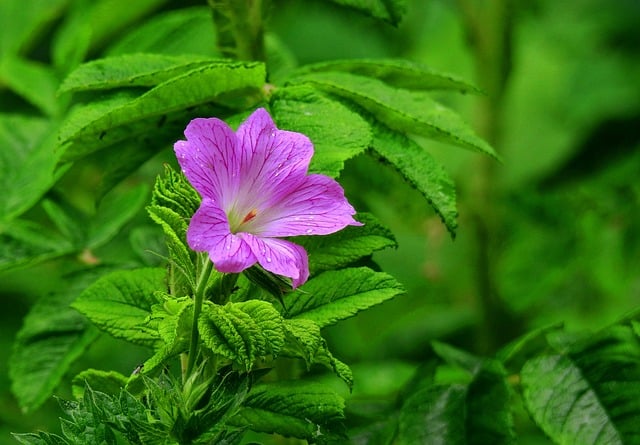Geraniums are common garden plants that are known for their colorful blooms and fragrant leaves. However, black spots on geranium leaves can be a sign of disease or environmental stress, which can cause the plant to wilt, lose leaves, and eventually die.
Understanding the causes of black spots on geranium leaves can help gardeners prevent and treat these issues, ensuring that their plants remain healthy and vibrant.
There are several common diseases that can cause black spots on geranium leaves, including bacterial leaf blight, alternaria leaf spot, and blackleg. These diseases can be caused by bacteria or fungi, and they can spread quickly if left untreated.
In addition to diseases, environmental factors such as overwatering, poor drainage, and excessive heat or humidity can also cause black spots on geranium leaves. By recognizing the symptoms of these issues, gardeners can take steps to address them and prevent further damage to their plants.
Proper plant care is essential for preventing and treating black spots on geranium leaves. This includes providing adequate water and drainage, ensuring proper soil pH and nutrient levels, and keeping the plant in a location with appropriate light and temperature conditions.
Additionally, gardeners can use preventative measures such as regular pruning and the use of fungicides to control disease and promote healthy growth. By taking these steps, gardeners can enjoy healthy, vibrant geraniums that are free from black spots and other common issues.
Key Takeaways
- Black spots on geranium leaves can be caused by disease or environmental factors.
- Recognizing symptoms and providing proper plant care can help prevent and treat black spots.
- Regular pruning and the use of fungicides can help control disease and promote healthy growth.
You might also like these other popular posts:
Understanding Black Spots on Geranium Leaves
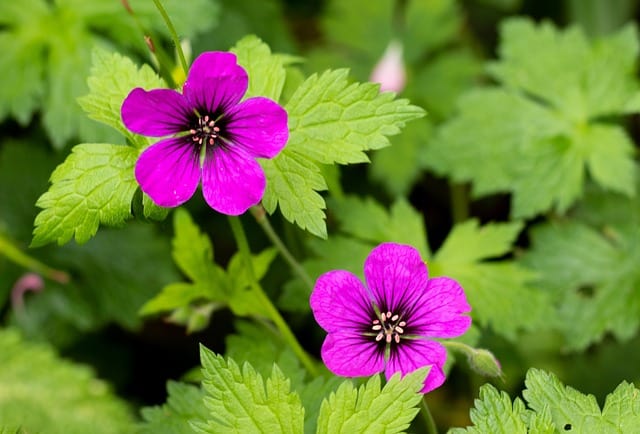
Geraniums are popular plants that are known for their vibrant flowers and attractive foliage. However, one common problem that gardeners may encounter is black spots on geranium leaves.
These spots can be a sign of various issues, including diseases, pests, or environmental stress. In this section, we will explore the possible causes of black spots on geranium leaves and how to diagnose the problem.
Possible Causes of Black Spots on Geranium Leaves
Fungal Diseases
Fungal diseases are a common cause of black spots on geranium leaves. One such disease is Alternaria leaf spot, which is caused by the fungus Alternaria alternata. This disease usually starts on the lower leaves and moves up to the higher ones.
The spots are raised quarter- to half-inch water-soaked spots on the lower surface of the leaves, which turn black over time. Another fungal disease that can cause black spots on geranium leaves is Puccinia pelargonii-zonalis, which causes pale green to yellow spots on the upper surface of the leaf that turn brown over time.
Bacterial Diseases
Bacterial diseases can also cause black spots on geranium leaves. One such disease is bacterial wilt, which causes spotting and wilting on leaves and rotting of stems. This disease is most often spread by using infected cuttings and can quickly destroy your geraniums.
Environmental Stress
Environmental stress can also cause black spots on geranium leaves. For example, overwatering can lead to root rot, which can cause black spots on the leaves. Similarly, exposure to extreme temperatures, such as frost or heat, can cause black spots on the leaves.
Diagnosing the Problem
To diagnose the problem, start by examining the black spots on the geranium leaves. Look for any patterns or signs of pests or diseases. Check the undersides of the leaves for any pests, such as spider mites or aphids.
If you suspect a fungal or bacterial disease, remove the affected leaves and dispose of them in the trash. Avoid using infected plant material as cuttings or compost.
Common Diseases Causing Black Spots
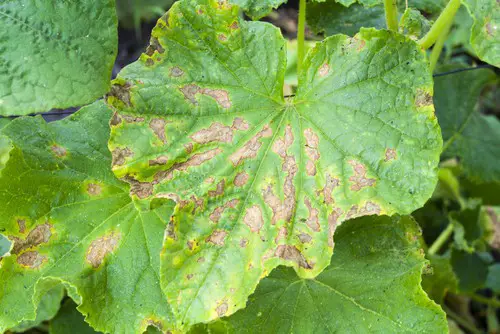
Geraniums are a popular flowering plant that is easy to grow and maintain. However, they are susceptible to various diseases that can cause black spots on their leaves. In this section, we will discuss some of the most common diseases that cause black spots on geranium leaves.
1. Geranium Rust
Geranium rust is a fungal disease that causes orange to brown spots on the undersides of the leaves. The spots can spread to the upper sides of the leaves and eventually cause the leaves to drop.
Geranium rust is caused by the fungus Puccinia pelargonii-zonalis, and it thrives in humid conditions. To prevent geranium rust, avoid overhead watering and keep the plants well-ventilated.
2. Bacterial Leaf Blight
Bacterial leaf blight is a disease caused by the bacteria Xanthomonas campestris pv. pelargonii. It causes water-soaked black spots on the leaves, which can quickly spread and cause the leaves to wither and die. To prevent bacterial leaf blight, avoid overhead watering and remove infected leaves immediately.
3. Alternaria Leaf Spot
Alternaria leaf spot is a fungal disease caused by the fungus Alternaria alternata. It causes black spots on the leaves, which can spread and cause the leaves to drop. Alternaria leaf spot thrives in humid conditions, so it is important to keep the plants well-ventilated and avoid overhead watering.
4. Botrytis Blight
Botrytis blight, also known as gray mold, is a fungal disease caused by the fungus Botrytis cinerea. It causes black spots on the leaves, which can quickly spread and cause the leaves to wither and die. Botrytis blight thrives in humid conditions, so it is important to keep the plants well-ventilated and avoid overhead watering.
5. Four-Lined Plant Bug Damage
Four-lined plant bug damage is caused by the insect Poecilocapsus lineatus. It causes brownish, round sunken spots on the leaves, which can eventually turn black. To prevent four-lined plant bug damage, remove weeds and other debris from around the plants, and use insecticidal soap to control the bugs.
Recognizing Symptoms of Diseases
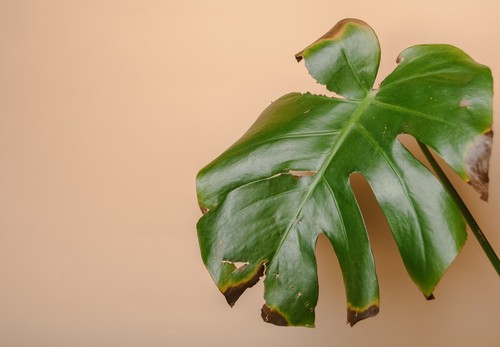
Geraniums are beautiful plants that can add color and vibrancy to any garden. However, they are susceptible to a variety of diseases that can cause black spots on their leaves. It is important to recognize the symptoms of these diseases to prevent the spread of infection and ensure the health of your plants.
One of the most common symptoms of geranium diseases is the appearance of black spots on the leaves. These spots can be oval or irregular in shape, and may have a yellow border.
In some cases, the leaves may also turn brown or yellow, and eventually wilt and die. Stem rot is another symptom to look out for, which is characterized by a softening and darkening of the stem.
Bacterial wilt is a disease that affects geraniums, and it can cause the leaves to wilt and turn yellow. This disease is caused by bacteria that infect the roots and spread throughout the plant.
Another disease that can cause black spots on geranium leaves is rust fungus. This disease is characterized by the appearance of orange or brown spots on the leaves, which eventually turn black.
Pseudomonas leaf spot is another disease that can cause black spots on geranium leaves. This disease is caused by a bacterium that infects the leaves and stems, and it can cause the leaves to turn brown and eventually collapse.
Root rot is another symptom to look out for, which is characterized by the decay of the roots and the appearance of black spots on the leaves.
In some cases, geraniums may also develop edema, which is characterized by the appearance of small, raised bumps on the leaves. Fasciation is another symptom that can affect geraniums, which is characterized by the abnormal growth of the stem and leaves.
Verticillium wilt is another disease that can affect geraniums, and it can cause the leaves to turn yellow and eventually wilt.
Role of Environmental Conditions
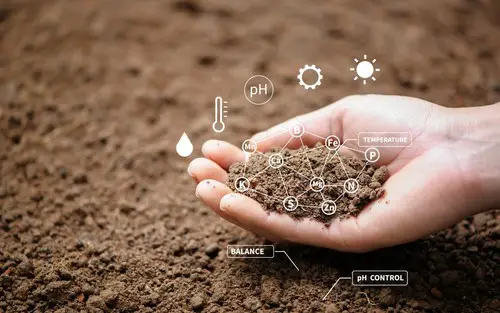
Environmental conditions play a crucial role in the development of black spots on geranium leaves. The following factors may contribute to the occurrence of black spots:
- Garden Location: Geraniums prefer a sunny location in the garden that receives at least six hours of direct sunlight daily. A shady location can lead to poor air circulation and dampness, which can cause fungal growth on the leaves.
- Soil Quality: Geraniums thrive in well-draining soil that is rich in organic matter. Poor soil quality can lead to nutrient deficiencies, which can weaken the plant’s immune system and make it more susceptible to disease.
- Moisture Levels: Overwatering or watering from above can lead to wet leaves, which can create a favorable environment for fungal growth. It is best to water geraniums at the soil level and avoid getting the leaves wet.
- Air Circulation: Adequate air circulation is essential for preventing fungal growth on geranium leaves. Planting geraniums too close together can restrict air flow and lead to dampness.
- Oxygen Levels: Geraniums require oxygen to grow and thrive. Poor soil drainage or overwatering can lead to waterlogged roots, which can suffocate the plant and cause black spots on the leaves.
- Annuals vs. Perennials: Geraniums are available in both annual and perennial varieties. Annuals typically have a shorter lifespan and may be more susceptible to disease. Perennials, on the other hand, are hardier and may be less prone to fungal growth.
- Wet Leaves: Wet leaves are more susceptible to fungal growth than dry leaves. It is essential to water geraniums at the soil level and avoid getting the leaves wet.
- Border Control: Geraniums should be planted away from other plants that may be infected with fungal diseases. This can help prevent the spread of disease to healthy geraniums.
Importance of Plant Care
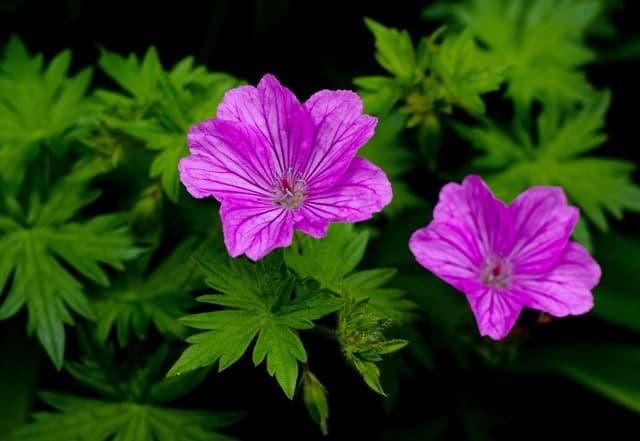
Geraniums are beautiful, flowering plants that can add color and vibrancy to any garden or indoor space. However, like any other plant, they require proper care and attention to thrive. Neglecting geraniums can lead to a variety of problems, including the development of black spots on the leaves.
To ensure that geraniums remain healthy and disease-free, it is essential to provide them with the right growing conditions.
This includes proper watering, fertilization, and pruning. Geraniums should be watered regularly, but not overwatered, as this can lead to root rot and other issues. Fertilizer should be applied sparingly, as too much can cause excessive growth and weak stems.
Pruning is also important for maintaining the health and appearance of geraniums. Dead or diseased stems and flowers should be removed promptly to prevent the spread of disease. Tools used for pruning should be cleaned and sanitized before use to prevent the spread of disease.
When purchasing geraniums, it is important to choose disease-free cuttings. Infected cuttings can introduce disease into your garden and cause problems for your other plants. Additionally, geraniums should be displayed in a warm, sunny location with good air circulation to prevent the development of fungal diseases.
If black spots do appear on geranium leaves, it is important to take action promptly to prevent the spread of disease. Fungicide can be used to treat infected plants, but prevention is always preferable to treatment.
By providing geraniums with the proper care and attention, it is possible to prevent the development of black spots and other issues, and enjoy beautiful, healthy plants for years to come.
Treatment and Prevention Methods
Black spots on geranium leaves can be a sign of various fungal and bacterial infections, including Xanthomonas campestris pv. pelargonii, Rhodococcus fascians, Pythium, Verticillium albo-atrum, and V. dahliae. Fortunately, there are several treatment and prevention methods that can help control and prevent these diseases.
Treatment Methods
Treatment methods for black spots on geranium leaves depend on the specific disease causing the spots. Fungal infections can be treated with fungicides, which are available in both organic and synthetic forms.
However, it’s important to note that fungicides may not be effective against all types of fungi. In some cases, it may be necessary to remove and destroy infected plant material to prevent the disease from spreading.
Bacterial infections, such as Xanthomonas campestris pv. pelargonii, cannot be treated with fungicides. Instead, infected plants should be removed and destroyed to prevent the disease from spreading to other plants. It’s also important to sanitize any tools or equipment used on infected plants to prevent the bacteria from spreading.
Prevention Methods
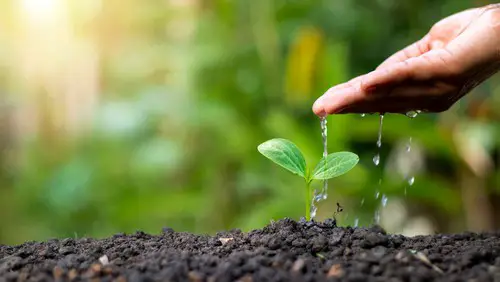
Prevention is key when it comes to controlling black spots on geranium leaves. Here are some prevention methods to consider:
- Choose disease-resistant varieties: Some varieties of pelargoniums are more resistant to certain diseases than others. Check with your local extension office or nursery to find disease-resistant varieties.
- Practice good sanitation: Keep your garden clean and tidy by removing any dead or diseased plant material. Sanitize your tools and equipment regularly to prevent the spread of disease.
- Avoid overhead watering: Watering geraniums from overhead can cause water to splash onto the leaves, which can promote the growth of fungi and bacteria. Instead, water at the base of the plant.
- Provide good air circulation: Good air circulation can help prevent the growth of fungi and bacteria. Avoid overcrowding plants and consider pruning back any dense growth.
- Use a well-draining soil: Geraniums prefer well-draining soil that doesn’t hold onto excess moisture. Consider adding perlite or vermiculite to your soil mix to improve drainage.
Frequently Asked Questions
How do you treat leaf spots on geraniums?
Treating leaf spots on geraniums involves removing the infected leaves and providing proper care to prevent further spread. Make sure to water the plant from below to avoid wetting the leaves.
Avoid overhead watering, which can spread fungal spores. Use a fungicide spray that is labeled for use on geraniums to treat the plant. Make sure to follow the instructions on the label carefully.
Why do my geranium leaves have spots?
Geranium leaves can have spots due to various reasons, including fungal infections, bacterial infections, or insect infestations. Overwatering or underwatering, poor air circulation, and high humidity can also cause leaf spots.
Make sure to provide proper care to the plant and avoid any conditions that can promote fungal growth.
What does fungus look like on geraniums?
Fungal infections on geraniums can appear as small, circular, or irregular-shaped spots on the leaves. The spots can be brown, black, or yellow, and they may have a yellow halo around them. The leaves may also turn yellow and drop prematurely. Powdery mildew can also appear as a white powdery coating on the leaves.
What is a good fungicide for geraniums?
A good fungicide for geraniums is one that is labeled for use on the plant and can effectively control the specific fungal infection. Some common fungicides for geraniums include copper-based fungicides, neem oil, and sulfur-based fungicides. Follow the instructions on the label carefully and apply the fungicide as directed.
How to treat brown spots on geranium leaves?
Treating brown spots on geranium leaves involves identifying the underlying cause of the spots and providing proper care to the plant. If the spots are due to fungal infections, use a fungicide spray labeled for use on geraniums.
If the spots are due to bacterial infections, remove the infected leaves and provide proper care to prevent further spread. Avoid overwatering or underwatering and maintain proper air circulation around the plant.
What are The Common Geranium pests and diseases?
Geraniums can be affected by various pests and diseases, including whiteflies, spider mites, aphids, and leaf spots. Proper care, including regular watering, fertilizing, and pruning, can help prevent infestations and infections.
Use insecticidal soap or neem oil to control pest infestations, and use fungicides to control fungal infections. Remove infected leaves and provide proper care to prevent further spread.

Hey, I’m Lisa and I’ve been an avid gardener for over 30 years. I love writing, talking and living in the garden! Feel free to connect with me on my socials below

